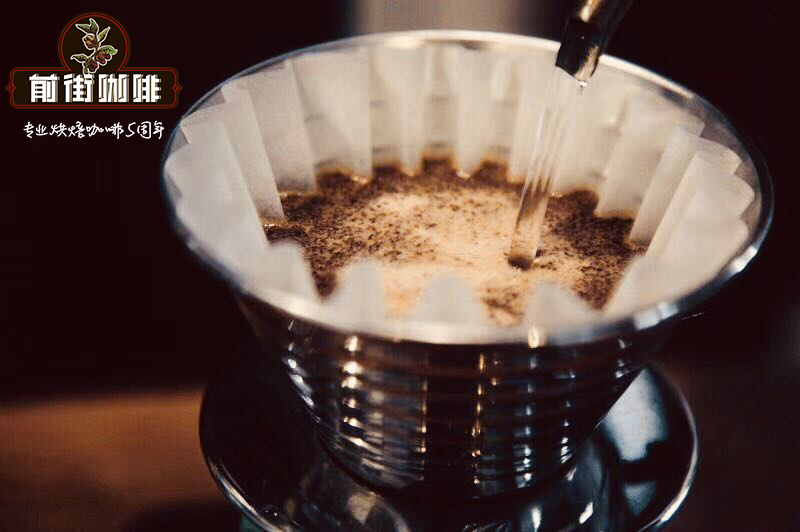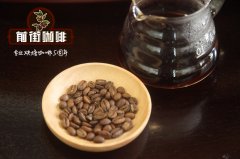The original taste of Jamaican Blue Mountain Coffee is authentic. What are the characteristics of Jamaican coffee taste?

Professional coffee knowledge exchange more coffee bean information please follow the coffee workshop (Wechat official account cafe_style)
[history of Jamaican Coffee Blue Mountain Coffee]
In 1717 King Louis XV of France ordered coffee to be grown in Jamaica, and in the mid-1920 s, the Governor of Jamaica, Nicholas. Nicholas Lawes imported Arabica seeds from Martinique and began to plant them in St. Andrew. To this day, St. Andrews is still one of the three major producers of Jamaican Blue Mountain Coffee, with the other two producing areas: Portland (Portland) and St. Thomas (St.Thomas). In eight years, Jamaica exported more than 375 tons of pure coffee. In 1932, coffee production reached its peak and more than 15000 tons of coffee was harvested.
In 1950, the Government of Jamaica established the Jamaica Coffee Industry Committee (the Jamaica Coffee Industry Board), which sets quality standards for Jamaican coffee and oversees the implementation of quality standards to ensure the quality of Jamaican coffee. The Commission awarded special official seals to raw and roasted coffee exported from Jamaica, which is the highest-level national coffee institution in the world. At present, there are six kinds of marks that can represent the origin of Blue Mountain Coffee, including Mafis River Embankment Central Factory (M.B.C.E), Blue Mountain Coffee Cooperative Factory (M.H.C.C.T.), Portland Jamaica Coffee Blue Mountain Coffee Cooperative Factory (P.X.X.S.H.), Coffee Industry Association (Wallenford), Coffee Industry Association (St. John's Peak) and J.A.S.
By 1969, the situation had improved because the use of Japanese loans had improved the quality of production, thus ensuring the market. By now, this kind of coffee has reached the point of being feverishly loved.
By 1981, about 1500 hectares of Jamaican coffee had been reclaimed to grow coffee, followed by investment in another 6000 hectares of coffee land. In fact, today's Blue Mountain area is a small area with a planting area of only 6000 hectares, and it is impossible to grow all the coffee marked "Blue Mountain" there. Another 12000 hectares are used to grow two other types of coffee: Alpine Top Coffee and Jamaican Superior Coffee.
Usually drink about a pound of 400 manor beans.
It's delicious to simply soak with an American machine.
Want to try the famous blue mountain of Jamaica
I bought 800 yuan a pound online.
And ask the boss to grind it.
Get the beans and smell them.
The smell is very light.
The smell is also very light when cooking.
The fragrance is also very light when soaked.
It tastes neither sour nor bitter
And it feels very thin.
Usually 400 yuan of beans are delicious when opened.
The smell of coffee was all over the room when it was cooked.
It tastes even more full-bodied and full of taste.
Ask for advice.
Is that what Jamaican coffee Blue Mountain tastes like?
3Q ~
Important Notice :
前街咖啡 FrontStreet Coffee has moved to new addredd:
FrontStreet Coffee Address: 315,Donghua East Road,GuangZhou
Tel:020 38364473
- Prev

Introduction of coffee beans in southern Laos dao coffee introduces the flavor characteristics of coffee beans in Laos
Professional coffee knowledge exchange more coffee bean information please follow Coffee Workshop (Wechat official account cafe_style) Laos, Southeast Asia's only landlocked country, has played an important role in the Golden Triangle drug trade over the past few decades. To help Laos get rid of opium poppy cultivation, the United Nations Office on drugs and Crime launched a campaign in 10 villages that used to grow opium poppy in Wapan province, near the border with Vietnam.
- Next

Which brand of Jamaican coffee is better, Jamaican Blue Mountain Coffee or Hawaiian Kona?
Professional coffee knowledge exchange more coffee bean information please follow the coffee workshop (Wechat official account cafe_style) people may ask what makes the Blue Mountain Coffee of Jamaican Coffee so special? The answer is everything about it. The real Blue Mountain Coffee is one of the most favorable coffee growing conditions in the world. The weather, geological structure and topography of Jamaica provide a unique reason.
Related
- Beginners will see the "Coffee pull flower" guide!
- What is the difference between ice blog purified milk and ordinary milk coffee?
- Why is the Philippines the largest producer of crops in Liberia?
- For coffee extraction, should the fine powder be retained?
- How does extracted espresso fill pressed powder? How much strength does it take to press the powder?
- How to make jasmine cold extract coffee? Is the jasmine + latte good?
- Will this little toy really make the coffee taste better? How does Lily Drip affect coffee extraction?
- Will the action of slapping the filter cup also affect coffee extraction?
- What's the difference between powder-to-water ratio and powder-to-liquid ratio?
- What is the Ethiopian local species? What does it have to do with Heirloom native species?

